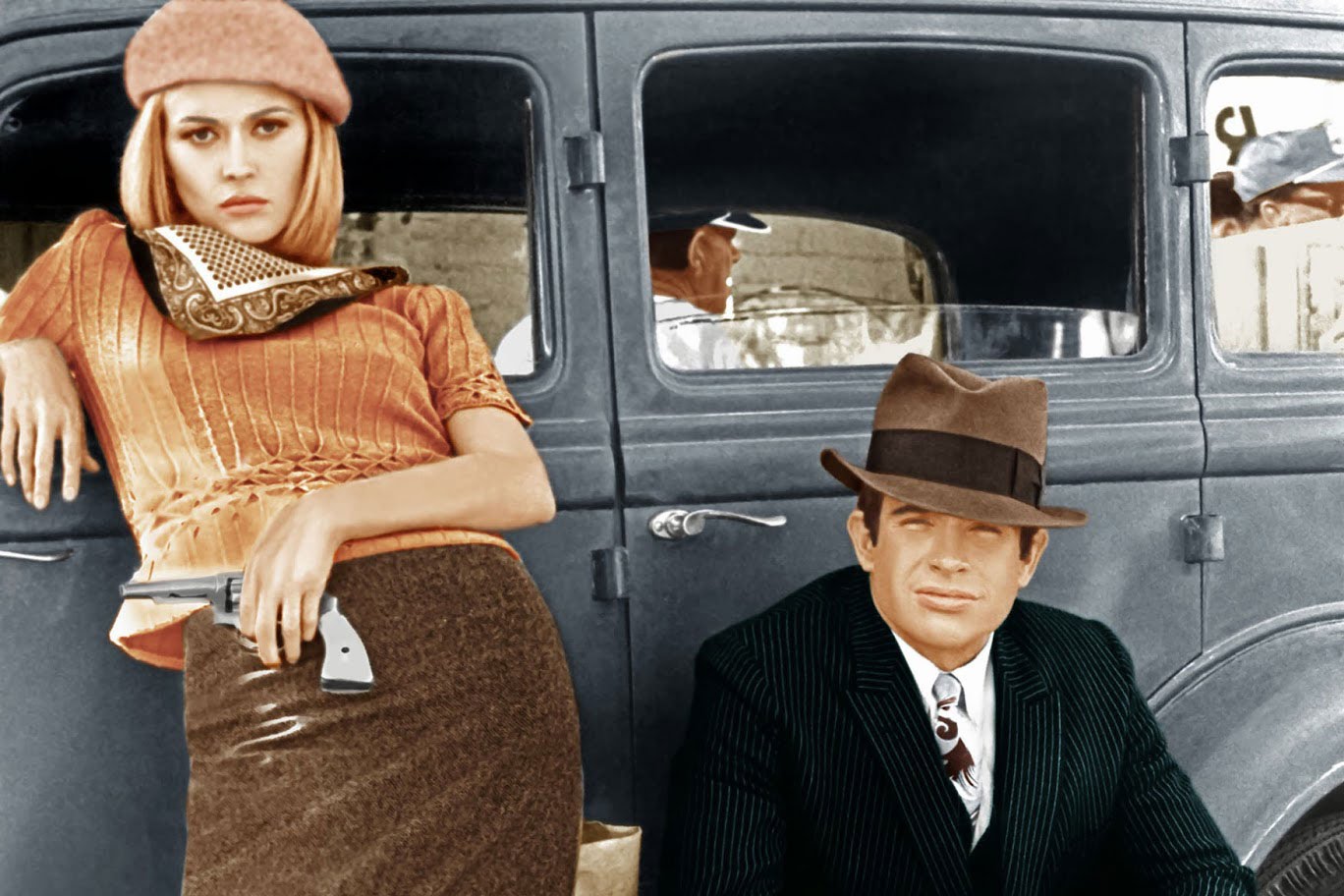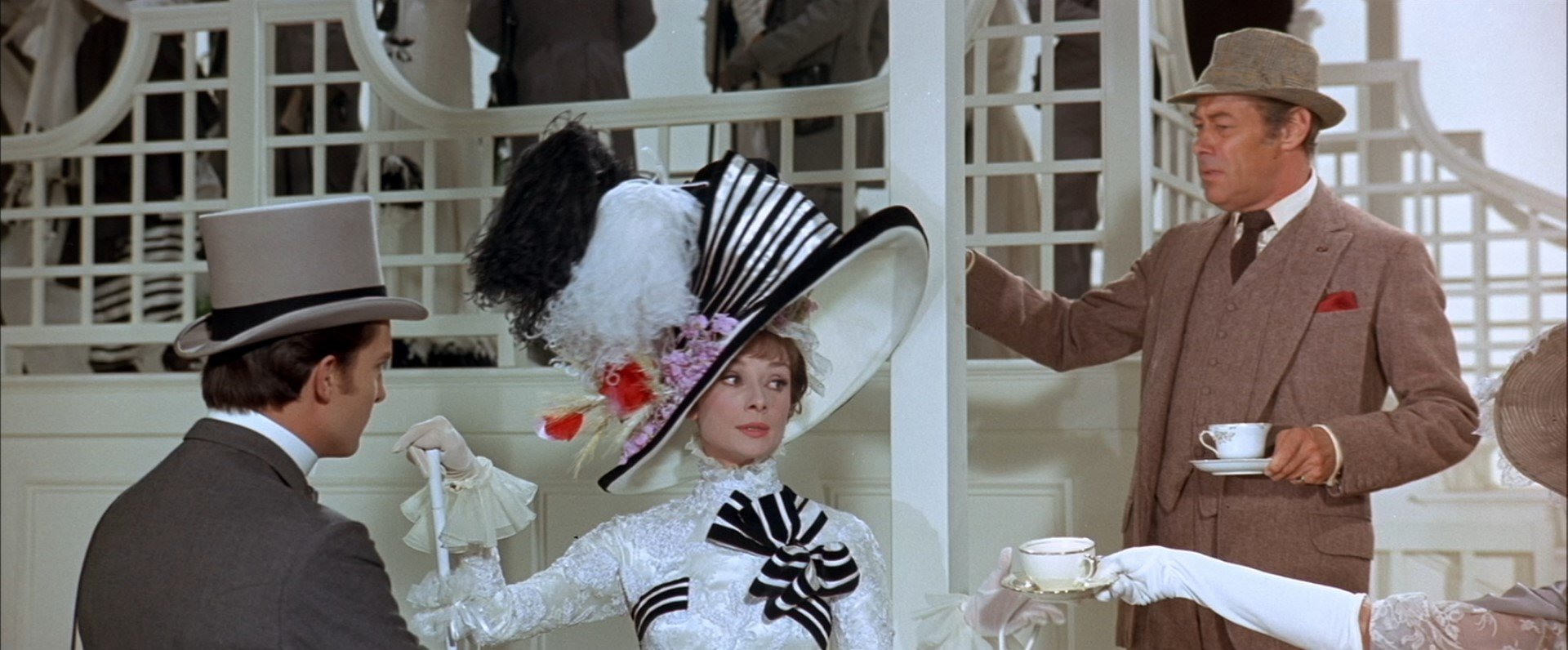The Stanford Theatre’s summer-long festival on the films from Warner Bros Studios is coming to a close. It’s beginning to end with great style: “My Fair Lady” (1964) plays Saturday, Sept. 23 to Monday, Sept. 25 at 7:30 p.m, with a 3:00 p.m. matinee on Saturday and Sunday.
Jack Warner, the long-time studio head of Warner Bros., personally guided this film adaptation of the hit 1956 Broadway musical, itself based on the 1913 play “Pygmalion” by George Bernard Shaw. Cockney flower-girl Eliza Doolittle (Audrey Hepburn) is taken under the wing of the pretentious and misogynist English linguistics professor, Henry Higgins (Rex Harrison in an Oscar-winning performance). Higgins bets a colleague that he can transform her into a fine English lady — but overrates his own English-club-coolness and slowly falls in love with his “creation.”
Harrison reprised his Broadway role for the film, but there was controversy with the decision to replace Julie Andrews (who originated the role of Eliza) with Hepburn. Warner reasoned that Andrews was too much of an unknown at the time, so he went with the established Hepburn. Andrews then famously accepted Walt Disney’s offer to star in “Mary Poppins.” Lots of people like to point out that Hepburn doesn’t sing her own songs while Andrews did, and this won the latter the Oscar for Best Actress that year. The story is somewhat true: Hepburn was dubbed over by Marni Nixon, who also did Natalie Wood’s singing voice in “West Side Story” (1961) and countless other voice-overs.
But this actually adds much more to the film. Eliza Doolittle is a completely constructed entity: Nixon’s singing voice, Cecil Beaton’s fabulous costumes, George Cukor’s empathetic direction, Andrews’ Cockney vocal twists, which Nixon picks up — all juggled by Hepburn. The musical’s driving tensions are between the artificial and the organic. How do we determine authenticity? And to whom does authorship of the self belong? It’s a work with contradictory messages: Eliza is free and not free of patriarchal influence in the maddeningly ambiguous final shot. It represents the best of what Studio Hollywood films could be and do.
And there are beautiful moments that could fill a whole book: Hepburn sashaying to “I Could Have Danced All Night,” Eliza’s return to her lower-class stomping grounds; a satiric scene at the races where lords and ladies glide in jerky, starchy motions and all of Rex Harrison’s slyly-knowing numbers — especially “I’ve Grown Accustomed to Her Face.” What joy there is in seeing Prof. Higgins go back and forth, his worldview shaken by a woman, and him unable to circle around it with the squares he’s used to. There’s a disturbing under-belly to this ostensibly cheery musical. I think back to each of Higgins’ hurtful condescensions-masked- as-good- ol’-chap humor or Eliza yeowling as she is forced into a tub of sinister steam (you don’t see the water). Here, Cukor and company subtly reveal the limits of enlightened English civilization — which Eliza Doolittle has been trying to lick for more than 50 years.
The film runs 170 minutes, with intermission. The music and lyrics by the team of Frederick Loewe and Alan Jay Lerner, who worked on MGM’s and Vincente Minnelli’s “Gigi” (1958) — another musical with similarly unresolved tensions involving the heroine.

Some of the highlights of the final two weeks of the Stanford’s Warner Bros. festival include:
“East of Eden.” The 1955 adaptation of the John Steinbeck novel by Elia Kazan (“On the Waterfront,” “A Face in the Crowd”), starring James Dean as the reckless Cal Trask — his first film role. (It would be the only film of his Dean would be alive to see released — by October of that year, he would be dead from injuries sustained in a car crash.) The cast includes Julie Harris, Raymond Massey and Jo Van Fleet in an Oscar-winning performance as the vengeful matriarch Cathy Ames. In CinemaScope. Plays Thursday and Friday, Sept. 21-22 at 7:30 p.m. On a double-bill with King Vidor’s Ayn Rand film “The Fountainhead” (1949), starring Gary Cooper.
“Calamity Jane.” The gay and fancy-free Western musical starring Doris Day as the titular raucous cow-pard, who may be in “Secret Love” with Wild Bill Hickok (Howard Keel). “Annie Get Your Gun” redux — or “Cat Ballou” without any camp quotation-marks. Plays Thursday and Friday, Sept. 28-29 at 7:30 p.m. On a double-bill with Gordon Douglas’ tender, aching “Young at Heart,” starring Day and Frank Sinatra in a musical remake of “Four Daughters” (1938), which plays Tuesday and Wednesday, Sept. 19-20.
“Bonnie and Clyde.” Arthur Penn’s chic, unstable scan of ’60s America — as seen through the eyes of the ’30s robber-couple Bonnie Parker (Faye Dunaway) and Clyde Barrow (Warren Beatty) and their gang. Along with the Mike Nichols films “Who’s Afraid of Virginia Woolf?” and “The Graduate,” its intense violence is said to have ushered in the New Hollywood (~1967-1982), giving rise to the cinema-school pack of George Lucas, Steven Spielberg, Martin Scorsese, Francis Ford Coppola, John Milius and more. With a cast that includes Gene Hackman, Michael J. Pollard, Estelle Parsons as the Oscar-winning shrieker Blanche — and a scene-stealing Gene Wilder (“Willy Wonka,” “The Producers”) in his first film role.
Contact Carlos Valladares at cvall96 ‘at’ stanford.edu.
